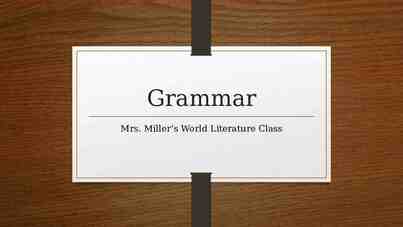CS2422 Assembly Language & System Programming October 31, 2006
19 Slides57.50 KB
CS2422 Assembly Language & System Programming October 31, 2006
Today’s Topics Macros Brief overview of Chapter 9, e.g., – MOVSB etc. – LODSB, STOSB etc. – REP Prefix
Study Guide Section 10.2: Macros Quickly browse Chapter 9 and Sections 10.1, 10.3, and 10.4
Introducing Macros A macro1 is a named block of assembly language statements. Once defined, it can be invoked (called) one or more times. During the assembler's preprocessing step, each macro call is expanded into a copy of the macro. The expanded code is passed to the assembly step, where it is checked for correctness. 1 Also called a macro procedure.
Defining Macros A macro must be defined before it can be used. Parameters are optional. Each parameter follows the rules for identifiers. It is a string that is assigned a value when the macro is invoked. Syntax: macroName MACRO [parameter-1, parameter-2,.] statement-list ENDM
mPutChar Macro Writes a single character to standard output. Definition: Invocation: Expansion: mPutchar MACRO char push eax mov al,char call WriteChar pop eax ENDM .code mPutchar 'A' 1 1 1 1 push eax mov al,'A' call WriteChar pop eax viewed in the listing file
Invoking Macros Each parameter is replaced by its corresponding argument when the macro is expanded. When a macro expands, it generates assembly language source code. Arguments are treated as simple text by the preprocessor.
Invalid Argument If you pass an invalid argument, the error is caught when the expanded code is assembled. Example: .code mPutchar 1234h 1 push eax 1 mov al,1234h error! 1 call WriteChar 1 pop eax ;
Blank Argument If you pass a blank argument, the error is also caught when the expanded code is assembled. Example: .code mPutchar 1 1 1 1 push eax mov al, call WriteChar pop eax
mGotoXY The mGotoXY macro sets the console cursor position by calling the Gotoxy library procedure. mGotoxy MACRO X:REQ, Y:REQ push edx mov dh,Y mov dl,X call Gotoxy pop edx ENDM The REQ next to X and Y identifies them as required parameters.
mWriteStr Macro (1 of 2) Provides a convenient way to display a string, by passing the string name as an argument. mWriteStr MACRO buffer push edx mov edx,OFFSET buffer call WriteString pop edx ENDM .data str1 BYTE "Welcome!",0 .code mWriteStr str1
mWriteStr Macro (2 of 2) The expanded code shows how the str1 argument replaced the parameter named buffer: mWriteStr MACRO buffer push mov call pop ENDM edx edx,OFFSET buffer WriteString edx 1 1 1 1 edx edx,OFFSET str1 WriteString edx push mov call pop
mWrite The mWrite macro writes a string literal to standard output. It is a good example of a macro that contains both code and data. mWrite MACRO text LOCAL string .data ;; data segment string BYTE text,0 ;; define local string .code ;; code segment push edx mov edx,OFFSET string call Writestring pop edx ENDM The LOCAL directive prevents string from becoming a global label.
Nested Macros mWriteLn MACRO text Nested macro: a macro mWrite text call Crlf invoked by another macro. ENDM mWriteLn "My Sample Macro Program" 2 2 2 2 2 2 2 1 .data ?0002 BYTE "My Sample Macro Program",0 .code push edx mov edx,OFFSET ?0002 call Writestring pop edx call Crlf nesting level
What I won’t cover in this course and why: Structure (easy for self-study) Conditional-Assembly Directives (easily confused with “dot directives” (e.g., .IF) for beginners)
Chapter 9 (Strings and Arrays) are also not covered. Except the following slides to let you get a feeling of what they are about.
MOVSB, MOVSW, and MOVSD The MOVSB, MOVSW, and MOVSD instructions copy data from the memory location pointed to by ESI to the memory location pointed to by EDI. .data source DWORD 0FFFFFFFFh target DWORD ? .code mov esi,OFFSET source mov edi,OFFSET target MOVSD
LODSB, LODSW, and LODSD Use LODSB, LODSW, and LODSD if you want to process the data before moving it. .data array 1,2,3,4,5,6,7,8,9 dest 9 DUP(?) .code mov esi,OFFSET array mov edi,OFFSET dest mov ecx,LENGTHOF array cld L1: LODSB or al,30h STOSB loop L1
Using a Repeat Prefix REP (a repeat prefix) can be inserted just before MOVSB, MOVSW, or MOVSD. ECX controls the number of repetitions Example: Copy 20 doublewords from source to target .data source DWORD 20 DUP(?) target DWORD 20 DUP(?) .code cld ; direction forward mov ecx,LENGTHOF source ; set REP counter mov esi,OFFSET source mov edi,OFFSET target REP MOVSD
























